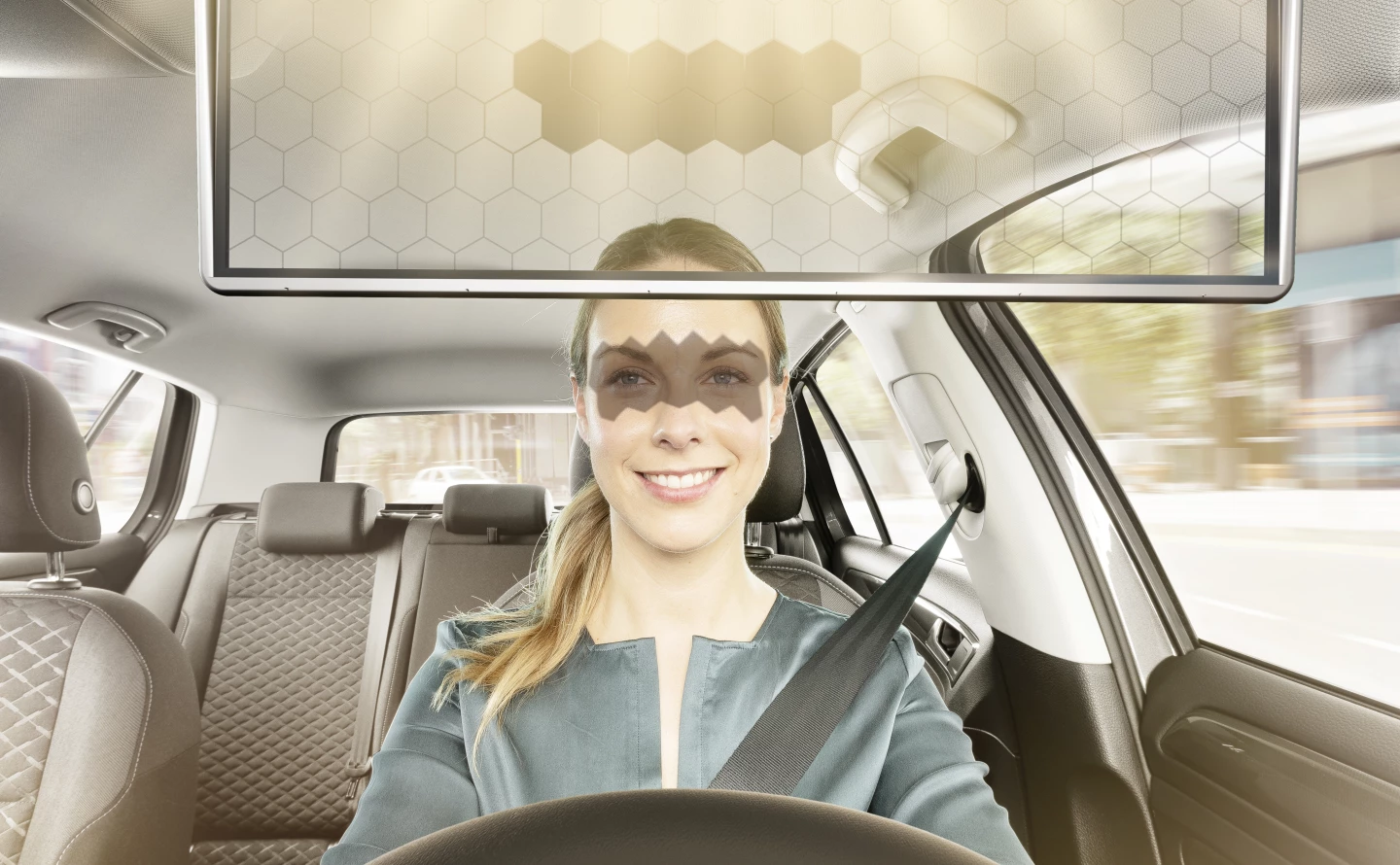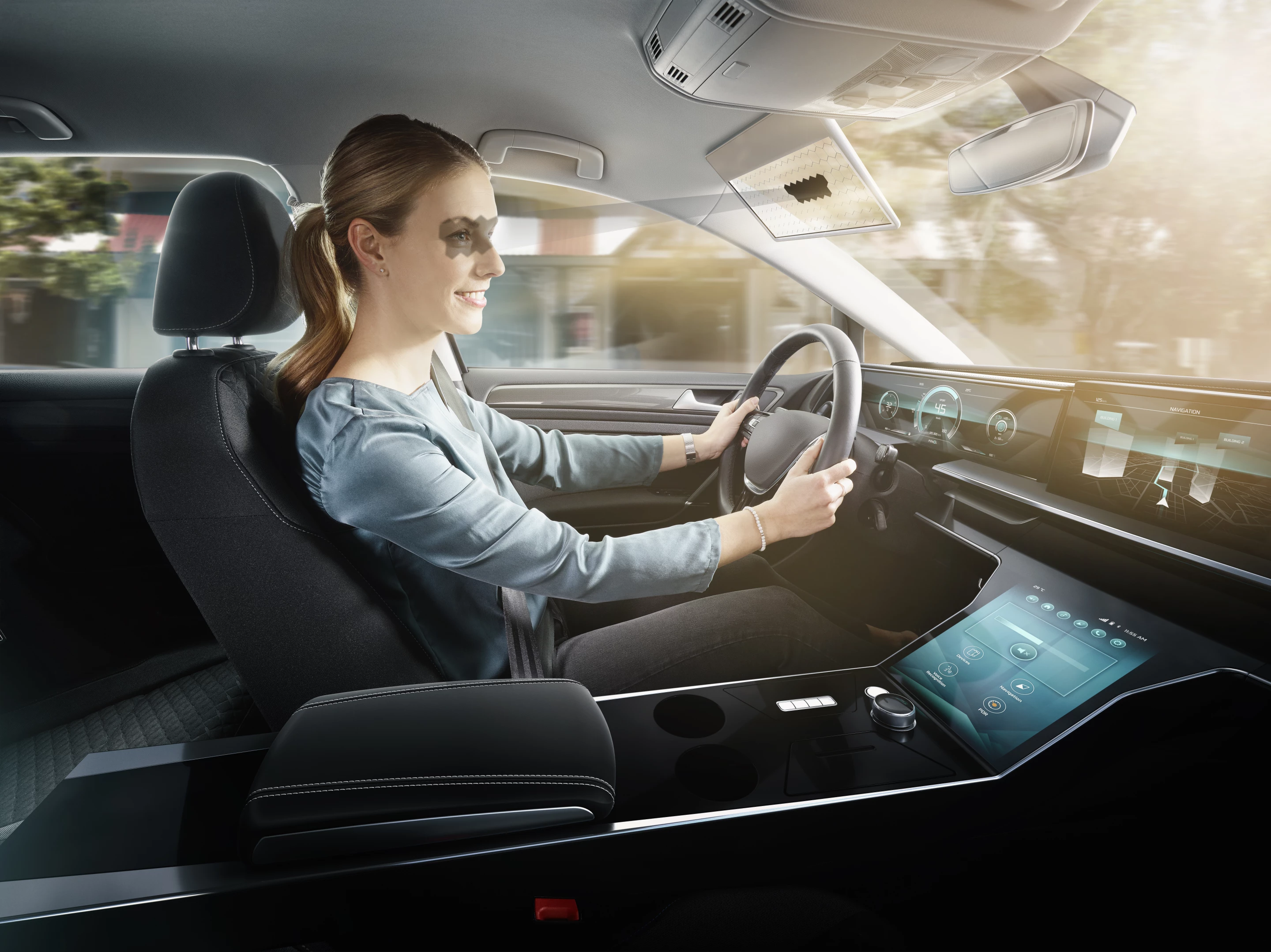According to Bosch, sun glare is the biggest weather-related cause of accidents. The company therefore wants to rethink the sun visor, with a see-through model that blocks sun only where it’s reaching the driver’s eyes.
Current visors block the sun, of course, but do so at the expense of visibility from the vehicle. The Bosch Virtual Visor addresses that, allowing full vision from the windshield while still providing protection from the sun’s glare.
Made up of a single, transparent LCD panel, the Virtual Visor utilizes a driver-facing camera, AI-based facial detection, and eye-tracking software to determine where the driver’s eyes are, and how much sun to block in order to eliminate glare without obscuring vision otherwise. This means that the visor blocks incoming light only on those parts of the LCD panel that are allowing it through to the driver’s eyes. As the driver moves, so does the blocking.

The Virtual Visor is made to replace a traditional sun visor in a vehicle, taking up the same space and using the same mounting hardware. While not completely “plug-and-play” for aftermarket use (yet), Bosch believes that the Virtual Visor could be integrated into current vehicle design with minimal modification.
The Virtual Visor has already won the CES 2020 Innovation Awards "Best of Innovation" prize in the In-Vehicle Entertainment and Safety category. Interestingly, the device was designed by three powertrain engineers at Bosch, working in their free time with funding and mentorship from the company.
Source: Bosch





